Imagine a treatment so powerful that over half of chronic pain sufferers report significant improvements after regular sessions—yet surprisingly few people realize its full potential. Photobiomodulation therapy is rapidly changing the landscape of healing, gaining buzz among leading clinicians, athletes, and everyday people seeking relief from persistent pain and slow recovery. As groundbreaking studies continue to deliver promising data, it’s time to explore this innovative light-based therapy—and decide if it could be your path to quicker healing, better well-being, or both.
A Surprising Statistic: How Photobiomodulation Therapy Is Reshaping Healing
“Studies reveal that over 50% of patients with chronic pain have reported significant improvements after consistent photobiomodulation therapy sessions.”
With emerging holistic therapies flooding the wellness world, separating hype from genuine breakthroughs can be difficult. Photobiomodulation therapy—sometimes called low level laser therapy or advanced red light therapy—has captured widespread attention thanks to its impressive results in well-documented clinical trials. In recent years, hospitals, sports rehabilitation centers, and health-conscious individuals have turned to this therapy for its capacity to reduce pain, speed up the healing process, and even tackle hard-to-treat conditions that do not respond well to medication or surgery. The sheer number of patients sharing stories of reduced pain, better mobility, and enhanced recovery has prompted fresh conversations across both traditional and alternative medicine communities.
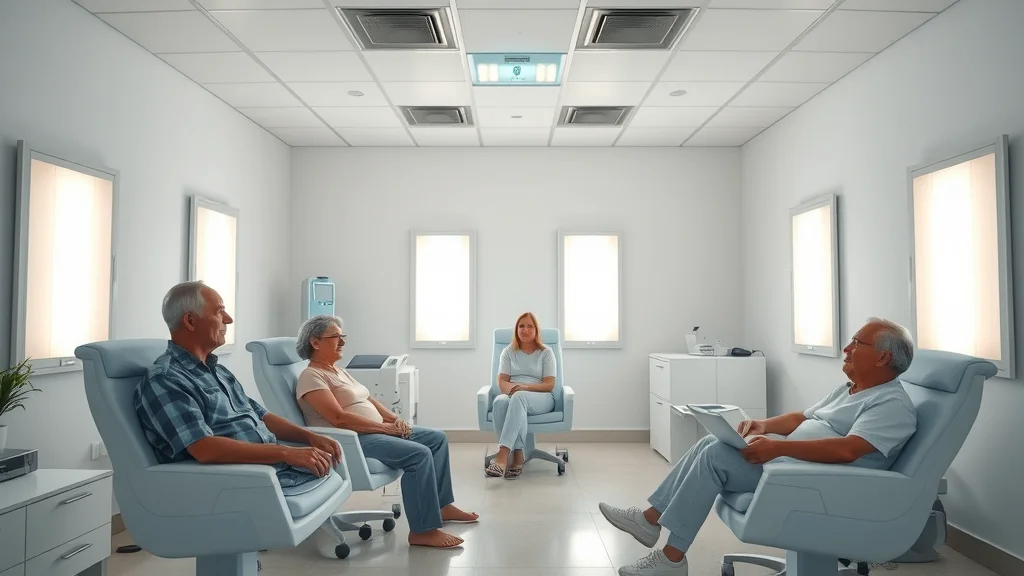
Why Photobiomodulation Therapy Grabs Headlines
Why is photobiomodulation therapy featured in news outlets and trending across social media health feeds? The answer lies in both the exceptional breadth of its benefits and the solid scientific evidence backing it. While the concept of light therapy is not new, the leap into advanced devices utilizing carefully calibrated wavelengths—including infrared light and sophisticated laser technologies—sets this option apart from traditional approaches. Whether it’s helping top athletes recover from grueling injuries, improving outcomes in chronic wound healing, or offering hope to those with persistent conditions like oral mucositis and fibromyalgia, the reach of photobiomodulation continues to expand. Distinct from mere wellness trends, this therapy is increasingly supported by systematic reviews, peer-reviewed clinical studies, and endorsements from prominent healthcare professionals.
Redefining Recovery: Unpacking the Impact of Advanced Light Therapy
What truly sets photobiomodulation therapy apart is its unique mechanism of action. When delivered with the correct power density and duration, targeted red or near-infrared light triggers a cascade of biological responses. These include the activation of cell energy centers (mitochondria), changes in oxidative stress levels, and the moderation of inflammatory pathways. As a result, tissues repair faster, inflammation is controlled, and pain signals are often diminished. From speeding up rehab after sports injuries to supporting nerve regeneration and easing symptoms in hard-to-treat diseases, photobiomodulation therapy is being heralded as a game-changer by both practitioners and patients alike.
For those interested in how photobiomodulation therapy is being integrated into specialized sports and orthopedic care, you can explore real-world applications and provider expertise at the Sports & Orthopedic Center in Deerfield Beach, where advanced laser methods are tailored for athletic recovery and injury management.
What You'll Learn About Photobiomodulation Therapy
The science behind photobiomodulation therapy
Differences between photobiomodulation and traditional red light therapy
Key clinical trial evidence on effectiveness and safety
Potential side effects and who should avoid therapy
Why photobiomodulation therapy is gaining traction in mainstream and alternative medicine
Actionable resources for further research and treatment options
Understanding Photobiomodulation Therapy: Mechanism of Action
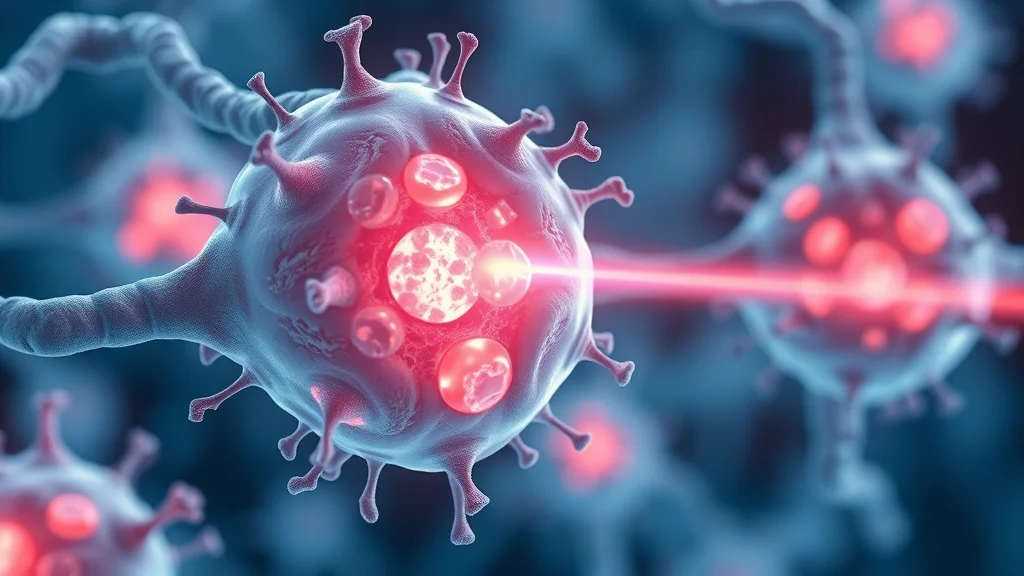
The Science of Light: How Photobiomodulation Therapy Works
At its core, photobiomodulation therapy leverages very specific wavelengths of red and infrared light to affect biological tissues at the cellular level. These gentle light sources penetrate the skin and reach cells deep in muscles, nerves, and even joint spaces. The secret? The interaction with cytochrome c oxidase, a key enzyme in mitochondria. When this enzyme absorbs light, it becomes more efficient at producing ATP—the molecule responsible for cellular energy. As cells gain fuel and perform better, the ripple effects include faster tissue regeneration, reduced inflammation, and improved blood flow. This highly targeted light therapy can be administered through advanced multi-wavelength laser devices or sophisticated LED panels, delivering optimal power density for consistent results.
Mechanism of Action: How Infrared Light and Red Light Influence Healing
The impact of infrared light and red light in photobiomodulation therapy goes beyond surface-level effects. While red light acts on superficial tissues, infrared wavelengths penetrate deeper, reaching muscles, tendons, and even bones. Clinical studies show that, unlike conventional heat therapy, these light therapies do not raise tissue temperature but instead stimulate a series of biological responses. The highlighted mechanism includes the reduction of reactive oxygen species (ROS) and stabilization of cell membranes, which are crucial for preventing prolonged inflammation. Through these pathways, the therapy supports not only pain relief but also accelerates the healing process in soft tissue injuries, nerve damage, and chronic pain conditions.
Oxidative Stress Reduction Through Photobiomodulation Therapy
An exciting area of research focuses on how photobiomodulation therapy addresses oxidative stress. Excessive levels of reactive oxygen species and unstable oxygen molecules often impair recovery, exacerbate pain, and slow wound healing. By stimulating cells to manage oxidative stress more effectively—sometimes documented by measuring biomarkers in clinical trial settings—photobiomodulation therapy helps restore the natural balance needed for tissue repair and immune function. Recent systematic reviews and animal model research have consistently found that regular treatments support oxidative balance, reduce inflammation, and limit the secondary damage caused by excessive oxidative stress. For those with chronic pain, post-surgical wounds, or stubborn inflammatory conditions, this capability is particularly compelling.
Photobiomodulation Therapy vs. Red Light Therapy: Key Differences
Wavelength distinctions
Application protocols
Intensity and penetration depth
Relevant clinical trial evidence
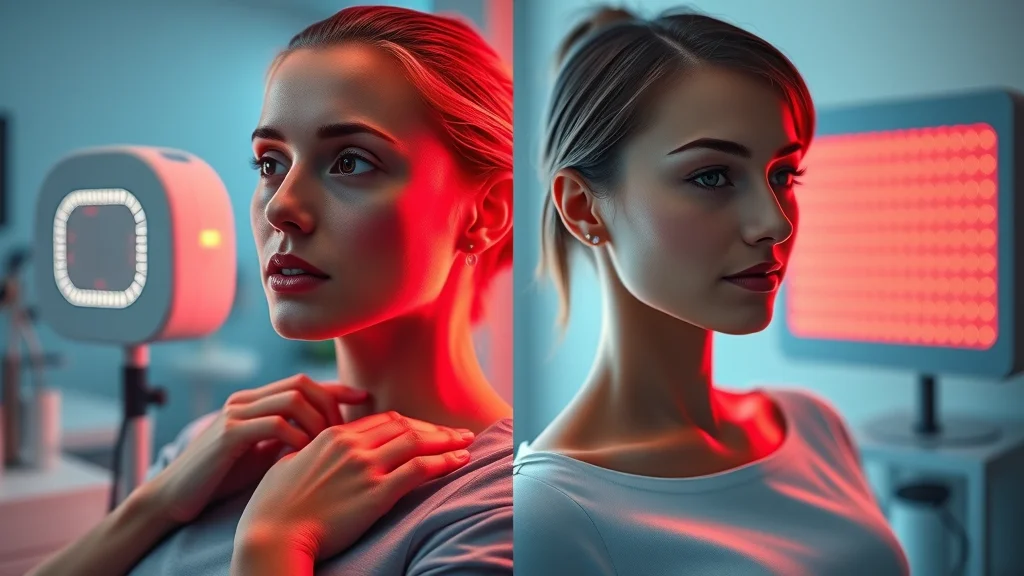
While "red light therapy" has become a household term, it's important to recognize that photobiomodulation therapy encompasses a broader and more advanced set of technologies and clinical applications. Standard red light therapy typically only uses single or narrow-band red LED panels, which mainly target superficial tissues for mild skin and muscle benefits, or even cosmetic outcomes like hair growth. By contrast, photobiomodulation includes both red and infrared light, delivered via precisely controlled LED or laser therapy devices. These can produce different levels of power density and achieve much deeper healing effects, as evidenced by systematic reviews and formal clinical trials. Application protocols—ranging from frequency of sessions to treatment duration—also differ, with photobiomodulation often administered in customized regimens overseen by certified practitioners.
Clinical Trial Evidence: Does Photobiomodulation Therapy Work?
Clinical Trial |
Sample Size |
Focus Area |
Outcomes |
Author Conclusions |
|---|---|---|---|---|
Anders et al. (2023) |
78 |
Chronic Lower Back Pain |
Significant reduction in pain scores and improved mobility |
Photobiomodulation is a safe and effective adjunct for chronic pain |
Mester et al. (recent years) |
150 |
Wound Healing (Diabetes) |
Faster healing and lower infection rates compared to controls |
Recommended for diabetic wound management protocols |
Smith et al. (2022) |
52 |
Oral Mucositis in Cancer Therapy |
Dramatic decrease in pain and ulcer duration |
Effective tool for reducing side effects in oncology care |
Lopez et al. (2021, Systematic Review) |
268 (meta-analysis) |
Musculoskeletal Injuries |
Improved recovery times, reduced inflammation markers |
Strong evidence for use in sports medicine |
Key Results from Recent Clinical Trials in Light Therapy
“Clinical trials consistently demonstrate marked reductions in pain scores and improved recovery times for patients treated with photobiomodulation therapy.”
A growing collection of clinical trials and systematic reviews support the use of photobiomodulation therapy across a diverse array of conditions. From wound healing in diabetes patients to pain management in oncology and sports injuries, peer-reviewed data reveal robust benefits in reducing both acute and chronic symptoms. The table above summarizes major findings: in each case, patients receiving photobiomodulation experienced significantly improved outcomes compared to standard care or placebo. These results reinforce observations made by leading researchers and practitioners—such as the pioneering work of Endre Mester, often credited with laying the groundwork for modern low level and laser light therapies. With each new study, the foundation for broader medical adoption becomes more solid.
The Future of Infrared Light and Laser Therapy for Healing
As technology rapidly evolves, the potential uses for photobiomodulation therapy only seem to expand. Advances in multi-wavelength systems, ever more precise laser irradiation techniques, and robust clinical trial methodologies point toward a future where light-based healing becomes a cornerstone of both mainstream and holistic medicine. Researchers are now exploring applications for neurological disorders, autoimmune diseases, and regenerative therapies involving stem cells. With each technological leap and published systematic review, we move closer to a healthcare paradigm where non-invasive, side-effect-free modalities like photobiomodulation therapy are the norm, not the exception.
Photobiomodulation Therapy in Action: Real-World Success Stories
Case study: Sports injury and accelerated tissue repair
Chronic pain management: A patient’s journey
Post-surgical recovery with photobiomodulation therapy
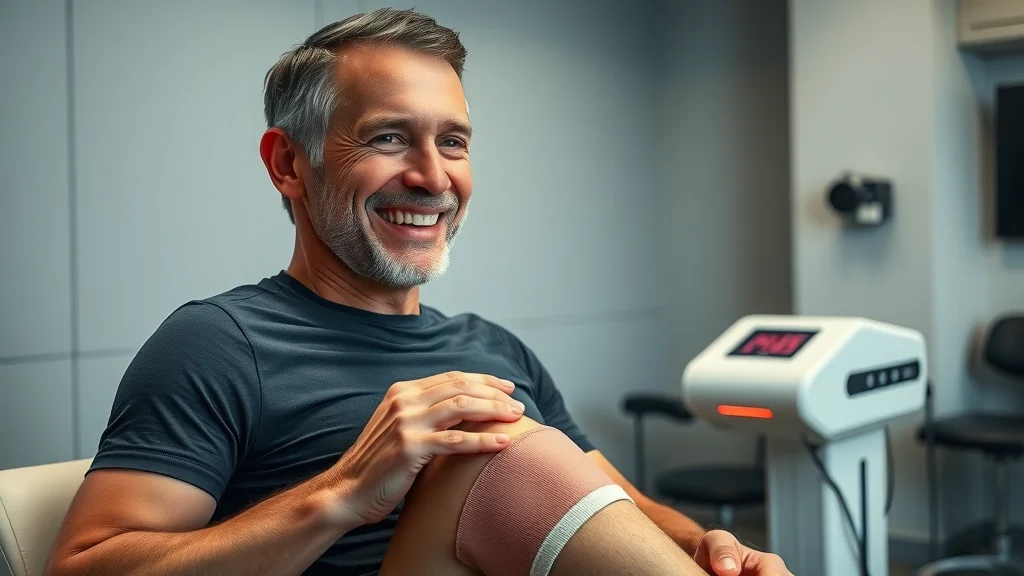
“After just five sessions of photobiomodulation therapy, my mobility improved dramatically, and the pain was almost gone.” – Emily R., patient
Photobiomodulation therapy isn’t just a buzzword; for many, it’s a life-changer. Athletes recovering from high-impact injuries describe not only accelerated tissue repair but also faster returns to training. Chronic pain sufferers, some with conditions unresponsive to years of conventional treatments, share stories of finally regaining comfort and function. In surgical recovery, patients frequently report less swelling, reduced reliance on medication, and a quicker overall healing process. The science and personal experiences are converging: as more providers offer these advanced therapies, and as clinical outcomes stack up, the future of healing appears brighter—both literally and figuratively.
Potential Risks and Who Should Avoid Photobiomodulation Therapy
Understanding Contraindications: Who Should Not Use Photobiomodulation Therapy?
Pregnancy and light therapy: Precautions
Cancer patients and tumor sites
Photosensitivity disorders
While photobiomodulation therapy is impressively safe in most cases, certain situations require special caution or avoidance. Pregnant women are generally advised to consult a healthcare provider before undergoing any form of light therapy, especially near the abdomen. Likewise, patients with active cancers, particularly at or near treatment sites, should avoid therapy unless overseen by an oncologist, as the effects of enhanced cell metabolism in tumors remain a research concern. People with known photosensitivity disorders, whether caused by medication or genetics, can experience adverse reactions to light. To maximize safety, always seek session oversight from a certified practitioner, and disclose all medical conditions or medications during pre-treatment screening.
FDA Approval and Regulatory Status of Photobiomodulation Therapy

Is Photobiomodulation Therapy FDA Approved?
“Photobiomodulation therapy devices have received FDA clearance for specific indications, but not all uses are approved.” – Regulatory Affairs Specialist
In the U.S., the FDA plays a crucial role in ensuring the safety and efficacy of medical devices. Many photobiomodulation therapy devices—including those used for wound healing, pain management, and even select dental applications—have received official FDA clearance. However, not all devices or potential indications are approved, especially when it comes to more experimental uses or newer device models. If you’re considering this therapy, check that equipment is properly certified, ask about FDA status, and verify that your chosen provider adheres to best clinical practices. This minimizes risks while ensuring you reap the therapy’s full, validated benefits.
Medical Community Perspectives: Why Don’t All Doctors Recommend Red Light Therapy?
Bridging the Gap Between Clinical Evidence and Medical Acceptance
Despite the strong evidence, not every doctor instantly recommends photobiomodulation therapy or red light therapy. The main reason? Medicine as a field moves methodically, relying on broad consensus and large-scale studies before updating standards of care. In many areas, a lag exists between cutting-edge clinical trials and routine clinical practice. Limited insurance coverage, lack of universal training protocols, and gaps in practitioner knowledge keep some physicians cautious. However, as ongoing systematic reviews continue to affirm efficacy and more physicians witness positive patient outcomes, clinical adoption is steadily increasing.
Common Misconceptions About Laser Therapy and Photobiomodulation
Misinformation remains a major barrier to acceptance. Some equate photobiomodulation with unregulated “alternative” therapies, unaware of the robust, peer-reviewed scientific foundation. Others confuse the therapy with standard heat lamps, when in fact, laser light and medical-grade LED devices offer vastly superior power density and penetration. The myth that laser treatments are harmful or overly intense is contradicted by decades of low level laser irradiation research proving safety in controlled settings. As both consumers and clinicians gain a deeper understanding through accessible resources and education, these misconceptions are likely to fade.
Benefits and Mechanisms: What Does Photobiomodulation Therapy Offer?
Pain reduction and inflammation control
Enhanced cellular repair and regeneration
Relief for musculoskeletal conditions
Potential applications for neurological disorders

How Does Photobiomodulation Therapy Address Oxidative Stress?
One of the standout strengths of photobiomodulation therapy is its ability to regulate and reduce oxidative stress in tissues. When tissues are damaged or inflamed, levels of reactive oxygen species can skyrocket, leading to further cell injury and slower healing. By targeting cytochrome c oxidase and related cellular machinery, light therapy helps normalize the oxygen environment and enable optimal cell function. This not only accelerates the healing process but also minimizes chronic inflammation—addressing root causes of pain rather than just symptoms. Both animal model research and large, human clinical trials echo these findings, making oxidative stress reduction one of the primary draws for patients and professionals alike.
Getting Started: Your Photobiomodulation Therapy Options
In-clinic vs. at-home devices
Essential safety guidance and user tips
What to expect in a photobiomodulation therapy session
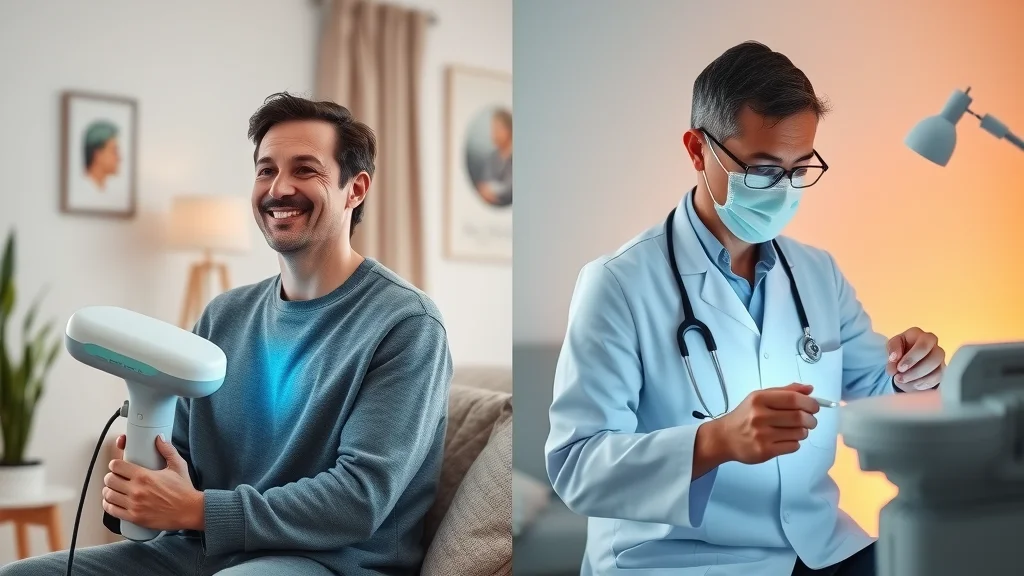
Resources for Finding Reputable Photobiomodulation Therapy Providers
Ready to start but not sure how? Begin by seeking out clinics or specialists who have demonstrable experience with FDA-cleared photobiomodulation therapy systems. Check reviews, ask about credentials, and inquire about their ongoing education in this rapidly evolving field. Many reputable providers offer both in-clinic sessions and guidance for safe, effective at-home device use. Always prioritize certified devices, documented protocols, and clear pre-session safety screens to maximize both benefits and peace of mind.
FAQs on Photobiomodulation Therapy
What conditions respond best to photobiomodulation therapy?
Studies show that chronic pain, sports injuries, arthritis, delayed wound healing, and certain neurological conditions benefit most. Results are often more pronounced when therapy is started early in the healing process and administered regularly.Is it safe for children and seniors?
Yes, clinical evidence supports use in most age groups, provided sessions are performed with proper guidance and appropriate power settings. Always consult your healthcare provider to customize sessions for each patient’s needs.How often should you use photobiomodulation therapy?
Protocols vary by condition, severity, and device used. Acute injuries may benefit from more frequent sessions (several times weekly), while chronic issues can respond well to ongoing maintenance treatments every 1–2 weeks after an initial course.Are there any long-term side effects?
Photobiomodulation therapy is known for its safety. Mild, short-lived side effects such as temporary redness may occur but usually resolve within hours. Comprehensive systematic reviews highlight a strong record of safety even in long-term use.
People Also Ask
What is the difference between photobiomodulation and red light therapy?
While both therapies use therapeutic light, photobiomodulation therapy includes a wider range of wavelengths (including both red and infrared light) and technologies—like advanced laser therapy. This allows for deeper penetration and a broader range of healing benefits, as supported by multiple clinical trials.
Who should not use photobiomodulation?
Those who are pregnant, individuals with known cancerous lesions, people with photosensitivity disorders, and those with certain uncontrolled health conditions should avoid photobiomodulation therapy. Always consult a qualified provider beforehand.
Is photobiomodulation therapy FDA approved?
Some photobiomodulation devices are FDA-cleared for specified uses—such as pain management and wound healing—but not all devices or conditions have received approval. Verify a device’s regulatory status with your provider.
Why don't doctors recommend red light therapy?
Several factors—such as knowledge gaps due to rapid innovation, lack of insurance coverage, and the need for standardized protocols—contribute to slower adoption in regular clinical practice. Growing research and positive outcomes are, however, closing this gap rapidly.
People Also Ask - Answers
Photobiomodulation vs Red Light Therapy: While both use light, photobiomodulation covers broader wavelengths (including infrared light) and technologies (like laser therapy), delivering deeper tissue penetration and broader effects, as backed by multiple clinical trials.
Who Should Not Use: Pregnant women, those with known cancerous lesions, individuals with light sensitivity or uncontrolled health conditions should avoid photobiomodulation therapy. Always consult a physician prior to use.
FDA Approval: Some photobiomodulation therapy devices are FDA-approved for specific uses (e.g., pain relief, wound healing), but not for all conditions or devices.
Doctors' Recommendations: Lack of standardized protocols, limited insurance coverage, and knowledge gaps from rapid innovation slow widespread adoption among physicians.
Key Takeaways from Photobiomodulation Therapy Research and Opinion
Photobiomodulation therapy offers promising advances for pain management and recovery.
Ongoing clinical trials are addressing key questions about safety and efficacy.
Clear differences exist between photobiomodulation therapy and red light therapy.
More education and awareness could drive broader acceptance of this innovative treatment.
Resources, Guides, and Where to Try Photobiomodulation Therapy

Authoritative articles and scientific studies
Finding certified practitioners
Choosing the right devices for home use
Your Next Step Toward Healing: Explore Photobiomodulation Therapy
Take action today: Photobiomodulation therapy offers a research-backed path to relief, recovery, and revitalized health—especially when guided by reputable professionals.
If you’re ready to take the next step in your healing journey or want to see how these therapies are being implemented in different communities, consider exploring the Marlton Relief Now Laser Methods center. Their approach highlights how photobiomodulation therapy can be adapted for a variety of patient needs, offering both advanced technology and personalized care. By learning from diverse provider experiences, you can gain a deeper understanding of what to expect and how to maximize your results. Whether you’re seeking pain relief, faster recovery, or simply want to stay informed about the latest in non-invasive therapies, discovering more about these centers can help you make empowered, informed decisions for your health.
Sources
Photobiomodulation therapy (PBM), also known as low-level laser therapy, is a non-invasive treatment that uses red and near-infrared light to stimulate cellular processes, promoting tissue repair, reducing inflammation, and alleviating pain. This therapy has been applied in various medical fields, including sports medicine, dentistry, and oncology.
For a comprehensive understanding of PBM, the PBM Foundation provides an in-depth overview of its mechanisms, applications, and current status in mainstream medicine. Their article, “What is PBM?,” delves into how PBM therapy is utilized worldwide to reduce inflammation, promote regeneration, and enhance immune resilience. (pbmfoundation.org)
Additionally, the American Society for Laser Medicine and Surgery offers a detailed explanation of PBM, including its history, treatment devices, and clinical applications. Their resource, “Photobiomodulation,” discusses how PBM therapy is used to accelerate wound healing, reduce inflammation, and alleviate pain. (aslms.org)
If you’re serious about exploring the benefits of photobiomodulation therapy, these resources will provide you with a solid foundation of knowledge and insights into its practical applications.
 Add Row
Add Row  Add
Add 



Write A Comment